Nonwoven Landscape Fabric

Table of Contents
Nonwoven Landscape Fabric: Your Guide to Weed Control and Soil Health
Choosing the right landscaping fabric can significantly impact the success of your gardening projects. Nonwoven landscape fabric, also known as weed barrier fabric, has become a popular choice for its effectiveness in weed control and its contribution to soil health. This comprehensive guide will explore everything you need to know about nonwoven landscape fabric, from its benefits and drawbacks to installation tips and choosing the right product.
What is Nonwoven Landscape Fabric?
Nonwoven landscape fabric is a permeable material made from synthetic fibers, typically polypropylene. Unlike woven fabrics, its fibers are not interwoven, creating a more porous structure. This allows water and air to penetrate, promoting healthy root growth while effectively preventing weeds from sprouting. This makes it a superior alternative to traditional plastic sheeting, which can suffocate the soil and harm plant life.
Key Advantages of Nonwoven Landscape Fabric:
- Effective Weed Control: The tightly knit structure prevents weed seeds from germinating and mature weeds from pushing through. This significantly reduces the time and effort spent on weeding.
- Improved Soil Drainage and Aeration: Unlike plastic sheeting, it allows water and air to reach the soil, preventing waterlogging and promoting healthy root systems. This is crucial for plant health and overall garden success.
- Reduced Soil Erosion: It helps stabilize the soil, minimizing erosion, particularly on slopes or in areas with heavy rainfall.
- Longer Lifespan: Durable polypropylene fibers offer a longer lifespan compared to other weed control options. High-quality fabrics can last for several years.
- Easy Installation: It's relatively easy to cut, shape, and install, making it a convenient option for both experienced and novice gardeners.
- Protection from Pests: Certain types can even offer some protection against some soil-borne pests.
Potential Disadvantages:
- Initial Cost: While the long-term benefits outweigh the initial investment, nonwoven landscape fabric is generally more expensive than plastic sheeting.
- Potential for Ripping: Though durable, sharp objects or heavy machinery can cause tears.
- Not Biodegradable: It's a synthetic material, and it won't decompose in the soil. Proper disposal is necessary.
- Weed Growth Over Time: While it's highly effective, some persistent weeds might eventually find a way through the fabric, especially if it degrades over time.
Choosing the Right Nonwoven Landscape Fabric
The quality and type of nonwoven landscape fabric vary significantly. Consider these factors when choosing a product:
- Weight: Heavier fabrics (typically 1 oz/sq ft or more) offer better weed control and durability. Lighter fabrics might be sufficient for less weedy areas.
- UV Resistance: Choose fabrics treated with UV inhibitors to extend their lifespan and prevent degradation from sunlight exposure.
- Permeability: Ensure adequate permeability to allow for proper water and air penetration.
- Application: Consider the specific application. Some fabrics are designed for specific uses, such as under pavers or around trees.
Installation Tips for Optimal Results
Proper installation is crucial to maximizing the effectiveness of nonwoven landscape fabric. Follow these steps for optimal results:
- Prepare the Soil: Clear the area of existing weeds, rocks, and debris. Loosen the soil to improve drainage and water penetration.
- Laying the Fabric: Overlap the edges of the fabric by several inches to prevent weed growth.
- Securing the Fabric: Use landscape staples, pins, or rocks to secure the fabric in place, especially in windy areas.
- Cutting Holes: Use a sharp knife or scissors to carefully cut holes for plants. Avoid making excessively large holes.
- Adding Mulch: Applying a layer of mulch on top of the fabric helps retain moisture, suppress weeds further, and improve the overall aesthetic appeal of your landscape.
Nonwoven Landscape Fabric vs. Other Weed Control Methods
Compared to other weed control methods, nonwoven landscape fabric offers a balance of effectiveness, longevity, and environmental impact. While herbicides provide immediate results, they can harm beneficial insects and contaminate the soil. Plastic sheeting is inexpensive but can negatively affect soil health. Nonwoven fabric offers a sustainable and effective alternative.
Frequently Asked Questions (FAQs)
- How long does nonwoven landscape fabric last? High-quality fabrics can last for 5-7 years or even longer depending on the quality and UV exposure.
- Is nonwoven landscape fabric biodegradable? No, it is a synthetic material and does not decompose naturally.
- Can I plant directly on top of the fabric? No, it’s crucial to cut holes for plants to allow for proper root growth.
- What type of mulch is best to use with nonwoven landscape fabric? Organic mulches like wood chips or shredded bark are ideal.
By understanding the benefits, drawbacks, and proper installation techniques, you can harness the power of nonwoven landscape fabric to create a thriving and weed-free garden. Remember to choose a high-quality product and follow the installation instructions carefully for optimal results. Investing in good quality nonwoven landscape fabric is a smart decision for long-term garden maintenance and soil health.

Thank you for visiting our website wich cover about Nonwoven Landscape Fabric. We hope the information provided has been useful to you. Feel free to contact us if you have any questions or need further assistance. See you next time and dont miss to bookmark.
Featured Posts
-
July 4th Sales On Furniture
Jan 25, 2025
-
Can You Close Fireplace Glass Doors
Jan 25, 2025
-
Open Plan Kitchen Living Room Ideas
Jan 25, 2025
-
Closing Nat West Rbs Branches 2025
Jan 25, 2025
-
6m Whittaker Joins Middlesbrough
Jan 25, 2025